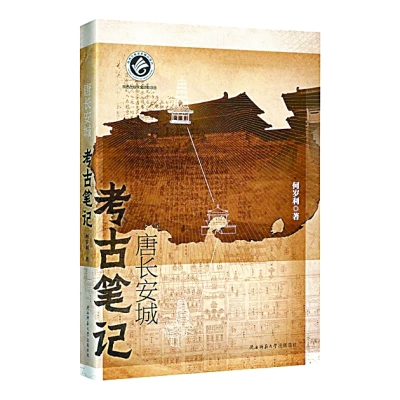Exploring archaeological discoveries of Tang capital

Archaeological Discoveries of Chang’an
As the capital of the Tang Dynasty (618–907), Chang’an (present-day Xi’an) was the largest city in the world at that time, with an area spanning 84 square kilometers. There were towering palaces, magnificent government offices, square residential areas, prosperous sales markets in the east and west of the city, and merchants from all over the world. As one of the most prosperous and civilized international cities in the world at the time, Chang’an and ancient Rome are considered to be representatives of ancient civilizations in the East and West.
In recent years, with the popularity of grave robbing novels and movies, the pursuit of archaeology has been misunderstood by many people. People may think that archaeology is just digging for treasures or digging up graves. At the same time, in order to commemorate the 1400th anniversary of the founding of the ancient capital, He Suili explores a real Chang’an in history from the perspective of a professional archaeologist, based on archaeological discoveries of Chang’an over the years. This archaeological interpretation can make more people understand archaeological work correctly. In particular, Archaeological Discoveries of Chang’an focuses on the archaeological discovery process of the Daming Palace, which is praised as “the pinnacle work of Chinese palace architecture.”
The predecessor of Chang’an was Daxing, which was first built in 582 as the capital of the Sui Dynasty (581–618). After the Tang replaced the Sui, the city was renamed Chang’an and still used as the capital. After many years of building, the city eventually became a world-famous capital city. However, the once splendid city of Chang’an was faded into ruins after the demise of the Tang Dynasty. It is now buried under Xi’an City, Shaanxi Province and the site of Chang’an has become a national key cultural relic protection site.
Chang’an had a regular urban layout. The city was composed of three parts: the palace city (domicile of the royal family), the imperial city (location of government offices) and the outer city (zone for business and residence). The palace city and the imperial city were located in the north of the outer city. There were 11 north-south streets and 14 east-west streets in the outer city. These vertical and horizontal streets divided Chang’an into 108 square area grids.
Few sites of the once prosperous Chang’an remain today, due to various reasons such as natural disasters and urban construction. According to rough statistics provided by the author, there are only about 27 genuine Tang Dynasty sites that can be seen in today’s Xi’an. Among them, the site of the Daming Palace has the largest scale, the most number of sites and archaeological discoveries.
edited by YANG LANLAN
